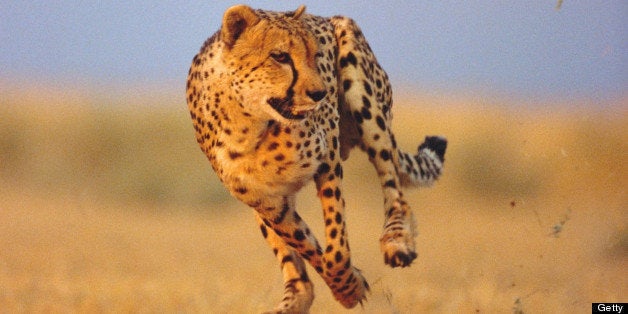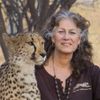
Cheetah Conservation Fund is dedicated to saving the cheetah in the wild. The cheetah lies at the heart of everything we do. So it's understandable that sometimes people are a little confused when they look at our programming and see that we devote significant resources to assisting livestock farmers in Namibia. The truth of the matter is that if the cheetah is to survive, the human communities that live alongside the cheetah must be sustainable as well. And there's reason to be concerned about that.
The grim reality is that by 2050, Earth's population will be well over 9 billion, and to feed so many people, we will have to double our food production over the next 40 years. Yet the industrial agriculture we rely on to produce food has become a major contributor to climate change, responsible for almost a quarter of all greenhouse gas emissions globally. The slow but inexorable alteration of the earth's climate has had a devastating effect on an unexpected but necessary resource -- soil. We have already degraded 2 billion hectares of usable soil, about 15 percent of the earth's land area, and roughly 30 percent of the world's crop land has been rendered unproductive.
We've seen it here in Namibia firsthand. The increase in desertification caused by climate change has led to the encroachment of thickened thornbush, reducing the amount of grassland available for farmers grazing livestock, for wild prey species like antelope, and for the predators who feed off those prey species -- like the cheetah. Namibia now has nearly 26 million hectares of land covered by thornbush. That's bigger than the state of Montana. The decrease in usable grassland aggravates human-wildlife conflict -- with more competition for fewer resources, farmers are even more likely to perceive predators as a threat to their livelihoods, and shoot them on sight.
Last year, the Commission on Sustainable Agriculture and Climate Change, an independent global organization of noted scientists from 13 countries, cited poverty alleviation and empowerment of vulnerable populations as one of its essential recommendations for ensuring food security for the planet for the next generation. Here at Cheetah Conservation Fund, we've been developing programs to enhance the livelihoods of the local communal farmers in cheetah country since our inception.
The farmers in the area of Namibia around CCF include communal, emerging and subsistence livestock farmers, raising cattle, sheep and goats. Making a living in this region is hard, and many here are poor. Our Future Farmers of Africa program teaches these farmers best practices for making their farms as productive and prosperous as possible. They learn better grazing practices, animal husbandry, herd and veld management, disease and vaccination programs, business principles. We advocate predator-friendly farming techniques, like the fact that using Livestock Guarding Dogs to scare away predators is a more effective way to protect flocks than shooting cheetahs.
We also provide livelihood development opportunities; we just opened our Dancing Goat Creamery, which produces cheese and other products from the goats at our Model Farm operation; a practice not commonly done in Namibia. By demonstrating new income streams available from their herds, we help farmers improve their livelihoods. Farmers that are more secure in their living are more likely to view wildlife conservation favorably, giving species like the cheetah a better chance at survival.
While it's clear that climate change and other factors are affecting us on a planetary scale, we can also see the implications locally, in our own communities. All of us -- humans, livestock, and wildlife -- have one planet, one ball of water and dirt, to try and eke out a living for ourselves. Now more than ever, we're all in this together. I've always known that we'd never save the cheetah without addressing the real needs of the human communities that live alongside it. It's now becoming clear that the same tactics that we've been using to save cheetahs might also possibly save the world.
